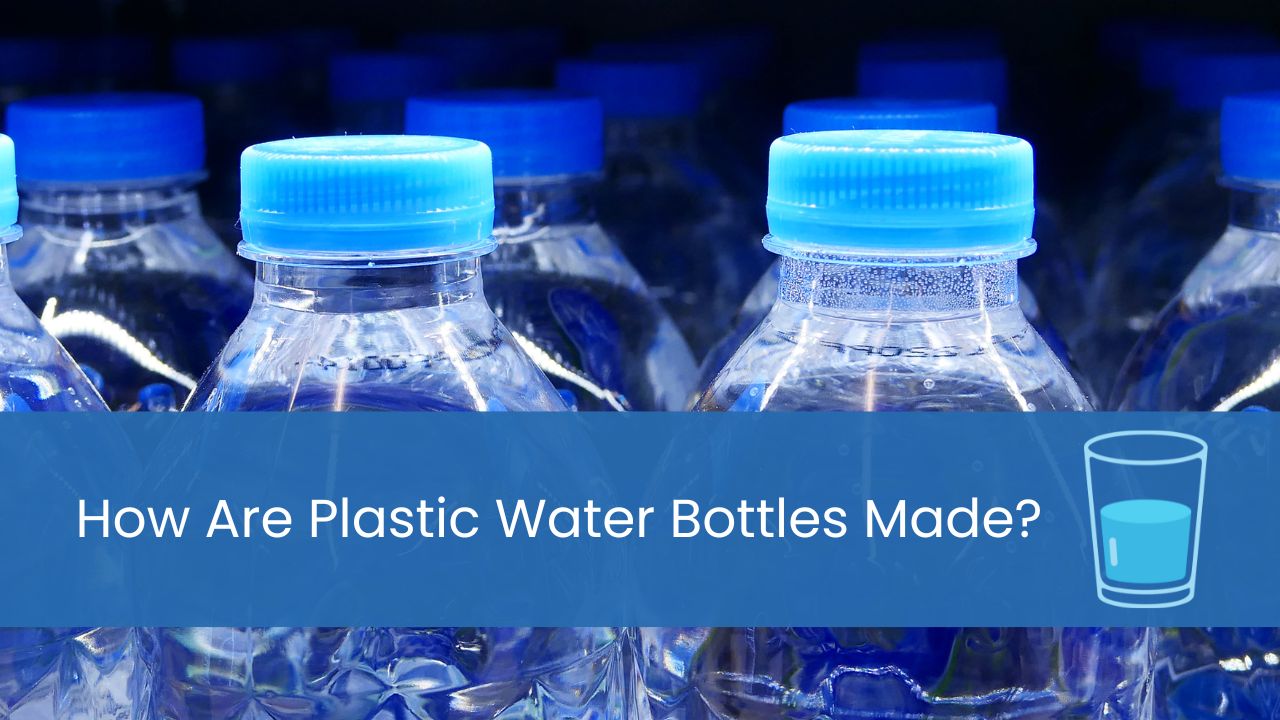Do you ever stop to think about how the plastic water bottle in your hand was made? It may seem like a simple object, but the process of creating it is actually quite complex.
In fact, there are several steps involved in turning raw materials into a finished product that can hold water and other beverages.
The process starts with the creation of polymer resin pellets, which are then melted down and formed into preforms. These preforms are heated again and blown into their final shape using high-pressure air.
The end result is a lightweight, durable container that we use every day without giving much thought to its origins.
So, let’s dive deeper into this fascinating process and learn more about how plastic water bottles are made.
Key Takeaways
- Plastic water bottles are made from petroleum or natural gas through a process of melting and molding polymer resin pellets into preforms, which are then blown into their final shape using high-pressure air.
- The production of plastic water bottles has a significant environmental impact, with 500 billion bottles produced per year, only 9% of which are recycled worldwide, and 5 billion liters of water used per minute during production.
- Efforts to reduce this impact include incorporating recycled materials or bioplastics made from renewable resources, as well as consumer behavior changes like using reusable water bottles made from glass or metal and supporting sustainable companies/policies.
- Ultimately, consumer choices will be key in determining the future production and use of plastic water bottles, and even small actions can make a difference in reducing waste and protecting the environment.
Table of Contents
- Key Takeaways
- How Are Plastic Water Bottles Made Step By Step?
- How Many Plastic Water Bottles Are Made Each Year?
- How Many Plastic Water Bottles Are Made Every Minute?
- Conclusion
How Are Plastic Water Bottles Made Step By Step?
Let’s take a closer look at how plastic water bottles are made, step by step.
The process starts with the raw materials – typically petroleum or natural gas – being extracted and transported to a facility where they’ll be transformed into plastic pellets.
These pellets are then transported to the manufacturing plant where they’ll be melted down and molded into the shape of a bottle using various molding techniques.
Despite concerns around sustainability, many manufacturers have made efforts to reduce their environmental impact in recent years. One way they’ve done this is by incorporating recycled materials into their production process or finding ways to make their bottles more easily recyclable.
Additionally, industry trends have shown a shift towards using bioplastics made from renewable resources as an alternative to traditional plastics.
As consumers become more conscious about the impact of single-use plastics on the environment, it’s likely that we’ll continue to see further innovation in this area.
How Many Plastic Water Bottles Are Made Each Year?
You won’t believe the staggering amount of plastic water bottles produced annually! According to recent statistics, approximately 500 billion plastic water bottles are produced worldwide each year.
This means that every minute, one million plastic bottles are purchased globally.
This enormous production rate has a significant environmental impact. Most of these bottles end up in landfills and oceans, creating pollution and endangering wildlife.
Recycling options are available, but unfortunately only a small percentage of these bottles get recycled.
As consumers become more aware of the environmental consequences of using single-use plastics, they’ve started seeking alternatives such as reusable water bottles made from glass or metal.
However, despite the negative effects on the environment and potential production costs for companies to switch to more sustainable materials, consumer behavior remains a key factor in determining how many more plastic water bottles will be made in the future.
How Many Plastic Water Bottles Are Made Every Minute?
It’s hard to imagine the sheer quantity of single-use plastic water bottles being produced every minute. According to a report by The Guardian, approximately 1 million plastic bottles are purchased worldwide every minute. This staggering number has a significant impact on our planet, from the amount of water consumed during production to the environmental impact of disposal.
To better understand the magnitude of this problem, it’s helpful to take a closer look at some statistics. The table below shows the estimated number of plastic water bottles produced globally per minute and what that equates to in terms of resources used and waste generated. While recycling solutions and sustainability efforts have made progress in recent years, there is still much work to be done in finding alternative products and reducing our reliance on single-use plastics.
| Statistics | Every Minute |
|---|---|
| Plastic Water Bottles Produced Globally | 1 million |
| Amount of Water Used During Production | 5 billion liters |
| Amount of Waste Generated Per Year | 500 billion bottles |
| Percentage Recycled Worldwide (2019) | 9% |
As consumers, we can make a difference by choosing reusable containers instead of disposable ones whenever possible. We can also support companies that prioritize sustainable practices and advocate for policies that promote environmental protection. By taking small steps towards reducing our use of plastic water bottles, we can contribute to a more sustainable future for all.
Conclusion
So, now you know how plastic water bottles are made step by step! It’s fascinating to think about the intricate process that goes into creating something so common in our daily lives.
But have you ever wondered just how many of these bottles are being produced each year? Well, according to recent statistics, over 480 billion plastic bottles were sold globally in 2019 alone. That’s a staggering number and it raises concerns about the impact on our environment.
Some experts even suggest that if we continue at this rate, there will be more plastic than fish in our oceans by 2050. It’s important to consider ways we can reduce our consumption of single-use plastics and make a positive change for the future of our planet.

Audrey McGill
About The AuthorMeet Audrey, the water-enthusiast behind WeLikeWater.com. Her love for all things H2O inspired her to create this laid-back space where folks can dive into the world of water. From the fizzy to the calm, Audrey's been on a journey through every ripple and wave, and she's eager to share her discoveries.

